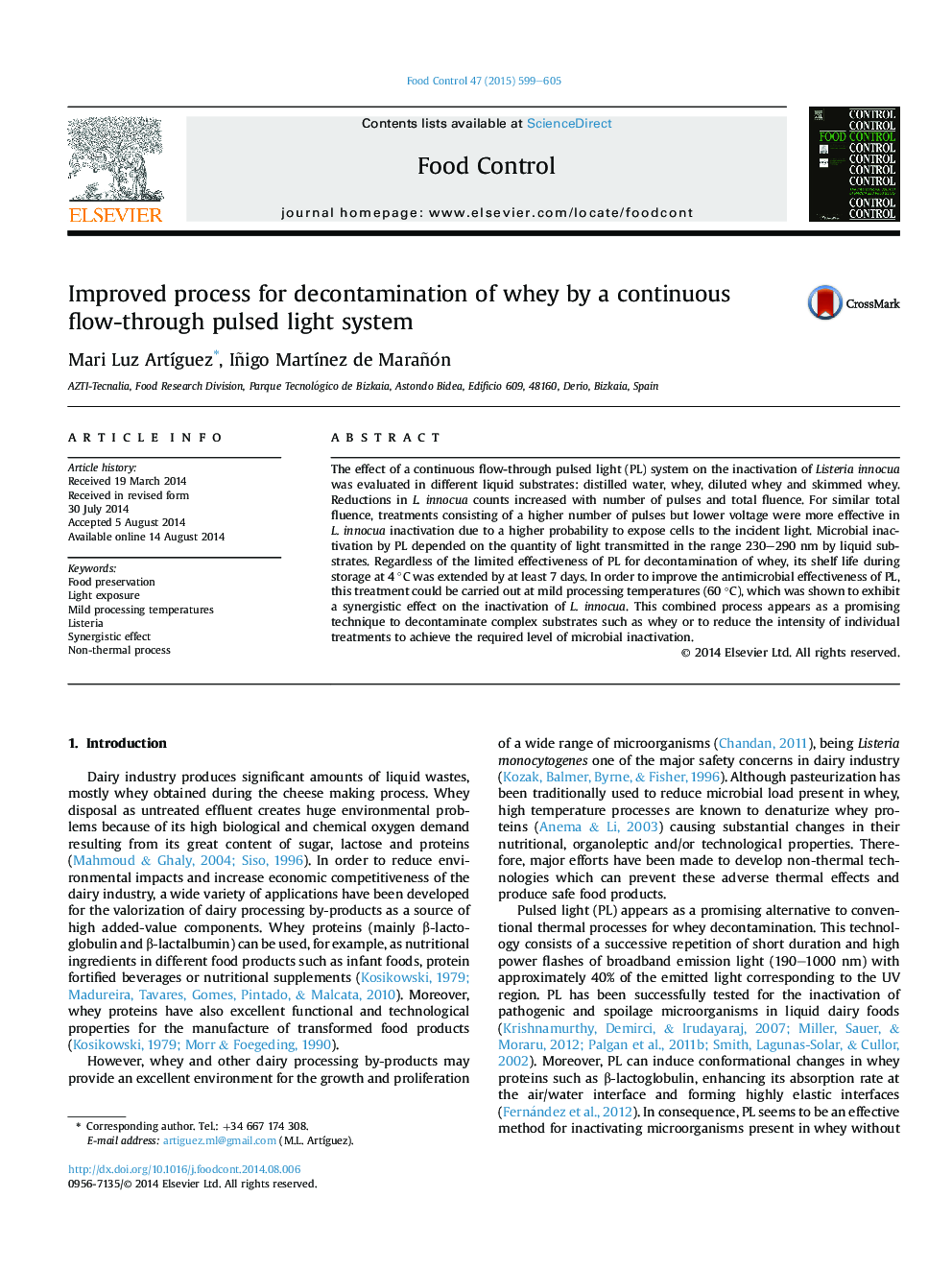| Article ID | Journal | Published Year | Pages | File Type |
|---|---|---|---|---|
| 6391504 | Food Control | 2015 | 7 Pages |
â¢Parameters affecting microbial inactivation in a continuous PL-system were evaluated.â¢PL treatments inducing a higher exposure of cells to the light were more effective.â¢Microbial inactivation by PL depended on the quantity of light transmitted by liquids.â¢PL treatments extended the shelf life of whey during storage at 4 °C.â¢PL and mild processing temperatures had a synergistic effect on microbial inactivation.
The effect of a continuous flow-through pulsed light (PL) system on the inactivation of Listeria innocua was evaluated in different liquid substrates: distilled water, whey, diluted whey and skimmed whey. Reductions in L. innocua counts increased with number of pulses and total fluence. For similar total fluence, treatments consisting of a higher number of pulses but lower voltage were more effective in L. innocua inactivation due to a higher probability to expose cells to the incident light. Microbial inactivation by PL depended on the quantity of light transmitted in the range 230-290 nm by liquid substrates. Regardless of the limited effectiveness of PL for decontamination of whey, its shelf life during storage at 4 °C was extended by at least 7 days. In order to improve the antimicrobial effectiveness of PL, this treatment could be carried out at mild processing temperatures (60 °C), which was shown to exhibit a synergistic effect on the inactivation of L. innocua. This combined process appears as a promising technique to decontaminate complex substrates such as whey or to reduce the intensity of individual treatments to achieve the required level of microbial inactivation.
